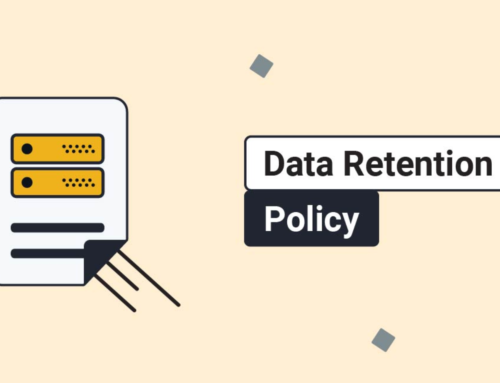Introduction:
The convergence of business applications has witnessed a significant shift in recent years, with organizations seeking to create a unified ecosystem that fosters collaboration, communication, and customer relationship management. Zoho Workplace, a suite of cloud-based applications designed for enhanced productivity and collaboration, stands out as a robust solution. When integrated with CRM systems, it opens up new possibilities for businesses to streamline their processes and deliver a superior customer experience.
Understanding Zoho Workplace:
A. Overview of Zoho Workplace:
Zoho Workplace is a comprehensive suite of productivity and collaboration tools designed to streamline communication and enhance teamwork within organizations. With its diverse set of applications, Zoho Workplace provides a seamless digital workspace for businesses to manage various aspects of their operations efficiently. The suite includes essential tools like Zoho Mail for email communication, Zoho Docs for document collaboration, Zoho Cliq for team messaging, and more.
Zoho Workplace’s collaborative tools are integral to its success, allowing teams to communicate, share files, and collaborate in real-time. Zoho Mail offers a robust email platform that ensures reliable communication within an organization, while Zoho Docs enables teams to create, edit, and share documents seamlessly. Zoho Cliq, a team messaging application, facilitates instant communication and fosters a collaborative environment.
The suite has evolved, adapting to the changing needs of businesses in the digital era. Zoho Workplace has continually integrated new features and updates to stay relevant and competitive in the market. Its evolution reflects a commitment to providing cutting-edge solutions that cater to the dynamic nature of modern work environments.
In terms of market presence, Zoho Workplace has gained recognition as a reliable and cost-effective alternative to other productivity suites. Its user-friendly interface and the ability to scale according to organizational needs have contributed to its popularity among businesses of all sizes. As organizations increasingly embrace remote work and flexible collaboration, Zoho Workplace has positioned itself as a valuable asset in facilitating seamless communication and efficient teamwork.
Zoho Workplace stands out as a comprehensive solution for businesses seeking an integrated suite of collaborative tools. With its evolution and consistent market presence, it has become a trusted choice for organizations looking to enhance productivity and streamline communication in today’s fast-paced digital landscape.
B. Core Features of Zoho Workplace:
Zoho Workplace is a comprehensive productivity suite designed to enhance collaboration and streamline communication within teams. One of its core features revolves around robust collaboration tools tailored for efficient document creation and sharing. This includes collaborative editing, real-time updates, and version control, enabling teams to work seamlessly on projects regardless of their physical location. The platform’s document creation features contribute to a more productive and cohesive workflow by fostering collaboration in real-time.
In addition to its document-centric collaboration tools, Zoho Workplace boasts communication features that facilitate seamless interaction among team members. From instant messaging to video conferencing, these tools are designed to bridge communication gaps and promote effective teamwork. The integration of communication tools within the platform enhances accessibility and ensures that teams can connect and collaborate effortlessly, contributing to a more agile and responsive working environment.
Recognizing the paramount importance of data protection, Zoho Workplace places a strong emphasis on security features. These features are implemented to safeguard sensitive information and ensure the privacy of users’ data. Encryption protocols, access controls, and compliance measures are integral components of Zoho Workplace’s security framework. By prioritizing data protection, the platform aims to instill confidence in users, reassuring them that their information is handled with the utmost care and diligence.
Zoho Workplace distinguishes itself by offering robust integration capabilities with third-party applications. This adaptability allows users to customize their workspace by seamlessly incorporating tools and services they already use. Whether it’s integrating with project management software, customer relationship management systems, or other business applications, Zoho Workplace’s integration capabilities contribute to a more interconnected and efficient work environment. This flexibility ensures that organizations can leverage their existing technology stack while benefiting from the collaborative and communication tools provided by Zoho Workplace.
The core features of Zoho Workplace revolve around facilitating collaboration, enhancing communication, ensuring data security, and providing integration capabilities. By addressing these fundamental aspects, Zoho Workplace aims to provide a holistic and versatile solution for teams and organizations seeking to optimize their productivity and streamline their workflows.
Importance of CRM Integration
Customer Relationship Management (CRM) integration plays a pivotal role in enhancing the efficiency and effectiveness of businesses in managing their customer interactions. CRM systems are designed to centralize and streamline customer data, providing a comprehensive view of customer relationships. This, in turn, enables businesses to tailor their services, understand customer needs, and ultimately foster stronger customer loyalty.
The Role of CRM Systems in Business
At the core of CRM integration is a deep understanding of the fundamental role CRM systems play in business operations. These systems serve as centralized repositories for customer information, encompassing contact details, purchase history, and communication preferences. By consolidating this data, businesses can gain insights into customer behavior and preferences, allowing for more personalized and targeted interactions.
Moreover, CRM systems facilitate efficient communication and collaboration within an organization. Sales, marketing, and customer service teams can access the same information, fostering a cohesive approach in managing customer relationships. This seamless coordination contributes to improved customer experiences and reinforces the overall brand image.
Benefits of CRM in Fostering Customer Loyalty and Driving Business Growth
CRM integration brings forth a myriad of benefits, prominently among them being the ability to foster customer loyalty. With a holistic view of customer interactions, businesses can create personalized experiences, anticipate needs, and address concerns promptly. This level of attentiveness enhances customer satisfaction and loyalty, crucial factors for long-term business success.
Furthermore, CRM integration is a catalyst for driving business growth. By leveraging the insights gained from CRM data, businesses can identify trends, optimize marketing strategies, and capitalize on new opportunities. The ability to target the right audience with tailored messages contributes to more effective sales and marketing efforts, ultimately boosting revenue and expanding market share.
Challenges in Standalone CRM Usage and the Need for Integration
While standalone CRM systems offer valuable functionalities, they often face challenges when used in isolation. One of the primary issues is data silos, where information is compartmentalized and not readily accessible across departments. This hinders collaboration and diminishes the overall effectiveness of the CRM system.
CRM integration addresses these challenges by connecting disparate systems and applications within an organization. This ensures a seamless flow of information, breaking down silos and enabling teams to work cohesively. The need for integration becomes evident as businesses strive for a unified approach to customer relationship management, where data is not just collected but utilized across the entire organization for informed decision-making.
The importance of CRM integration lies in its ability to optimize business processes, enhance customer relationships, and drive overall growth. It acts as a linchpin that brings together diverse facets of an organization, ensuring a unified and customer-centric approach to business operations.
Benefits of Integrating Zoho Workplace with CRM Systems:
Integrating Zoho Workplace with Customer Relationship Management (CRM) systems offers a myriad of benefits, significantly impacting the way businesses manage their operations and engage with customers. This integration facilitates seamless communication among various departments, particularly sales, marketing, and customer support teams. By breaking down communication barriers, organizations can foster collaboration and enhance their overall workflow.
One key advantage is the elimination of data silos that often exist between collaborative and customer data. Zoho Workplace’s integration with CRM systems ensures that relevant information is easily accessible to all relevant teams, preventing the isolation of crucial data. This not only enhances data accuracy but also ensures that teams are working with the most up-to-date and comprehensive information, leading to better decision-making and more informed customer interactions.
Furthermore, the integration enhances customer insights and personalization of interactions. With a unified view of customer data, businesses can gain a holistic understanding of their customers’ preferences, behaviors, and needs. This insight enables more targeted and personalized communication, ultimately improving customer satisfaction and loyalty. Businesses can tailor their marketing strategies and sales approaches based on a comprehensive understanding of individual customer journeys.
The overall result of integrating Zoho Workplace with CRM systems is a significant boost in productivity and efficiency. Teams can collaborate more effectively, access relevant information effortlessly, and make data-driven decisions. By streamlining processes and breaking down communication barriers, businesses can optimize their operations, reduce redundancies, and allocate resources more efficiently. This, in turn, leads to improved overall performance and a more responsive approach to customer needs.
The integration of Zoho Workplace with CRM systems is a strategic move that transforms the way organizations operate. By fostering collaboration, enhancing data accuracy, and providing valuable customer insights, this integration contributes to a more streamlined, efficient, and customer-centric business environment.
Integration Strategies:
A. Technical Considerations:
One crucial aspect of integrating Zoho Workplace into a business environment revolves around technical considerations. The compatibility of Zoho Workplace with popular CRM systems such as Salesforce and HubSpot is a pivotal factor. It is imperative to assess how seamlessly these platforms can interact to ensure a smooth flow of data and information across the organization. Additionally, evaluating the API capabilities of Zoho Workplace becomes essential. Understanding the extent to which APIs can be leveraged for data synchronization between Zoho Workplace and CRM systems is vital for optimizing the integration process. Moreover, stringent security protocols must be in place to safeguard sensitive customer data, ensuring that privacy and compliance standards are met.
B. Step-by-Step Implementation Guide:
For a successful integration, a comprehensive step-by-step implementation guide is indispensable. The first step involves setting up accounts on both Zoho Workplace and the chosen CRM platform. Following this, configuring integration settings is critical to establishing a seamless connection. This includes defining how data will be exchanged and synchronized between the two systems. Another crucial step in the implementation guide is mapping data fields. This process ensures that information flows seamlessly between Zoho Workplace and the CRM, preventing data discrepancies. Testing and troubleshooting are integral parts of the guide, allowing for the identification and resolution of any issues that may arise during the integration process.
C. Customization Options:
Tailoring the integration to meet specific business requirements is an essential consideration. Businesses have unique processes and workflows, and customization options allow for the alignment of Zoho Workplace and CRM integration with these specific needs. Automation of workflows is a key customization aspect that enhances operational efficiency. By automating repetitive tasks, businesses can save time and resources. Incorporating custom fields and data points is another avenue for tailoring the integration. This enables organizations to capture and utilize data that may be specific to their industry or internal processes, providing a more comprehensive view of customer interactions and business operations.
Real-World Use Cases:
In the realm of business solutions, the integration of Zoho Workplace and Customer Relationship Management (CRM) systems has emerged as a powerful combination. Numerous organizations across various industries have witnessed tangible benefits from implementing this integration.
- Case Studies:
Delving into specific case studies offers a comprehensive understanding of the impact of Zoho Workplace and CRM integration. Examining success stories reveals how organizations have effectively streamlined their operations, enhanced customer engagement, and achieved notable business outcomes. For instance, a retail company may share insights into how the integration led to a significant boost in sales by providing a seamless flow of information between teams, resulting in more targeted marketing strategies and improved customer interactions. These real-world examples serve as a testament to the versatility and efficacy of the Zoho Workplace and CRM integration.
Furthermore, these case studies shed light on quantifiable benefits. Metrics such as increased sales revenue, improved customer satisfaction scores, and reduced operational costs provide concrete evidence of the integration’s impact. By analyzing these metrics, businesses contemplating the integration can gain valuable insights into the potential return on investment and make informed decisions about adopting the Zoho Workplace and CRM integration.
- Industry-Specific Applications:
The applicability of Zoho Workplace and CRM integration extends across diverse industries. Understanding how this integration can be tailored to meet the unique needs of different sectors is crucial for businesses seeking industry-specific solutions.
Industry-Specific Applications:
- Healthcare:
In the healthcare sector, Zoho Workplace and CRM integration can revolutionize patient care and administrative processes. The seamless exchange of information between healthcare providers, streamlined appointment scheduling, and personalized patient communication contribute to improved patient outcomes and operational efficiency.
- Finance:
For financial institutions, the integration offers enhanced client relationship management and data security. Automation of financial workflows, integration with communication tools, and real-time access to client information empower financial professionals to make informed decisions, ultimately leading to improved client satisfaction and regulatory compliance.
- Manufacturing:
In the manufacturing industry, Zoho Workplace and CRM integration can optimize supply chain management, production planning, and customer order fulfillment. Real-time collaboration among different departments ensures efficient production processes, reduces lead times, and enables manufacturers to respond swiftly to changing market demands.
By exploring these industry-specific applications, businesses gain insights into the tailored benefits and advantages that Zoho Workplace and CRM integration can bring to their particular sector. This knowledge facilitates informed decision-making and encourages organizations to harness the full potential of this integration for their unique business challenges and opportunities.
Best Practices for Ongoing Optimization:
Continuous Monitoring and Maintenance:
Effective integration systems require continuous monitoring and maintenance to ensure optimal performance. Proactive monitoring involves regularly assessing the integration’s performance metrics, such as response times, data accuracy, and system dependencies. This proactive approach allows for the early detection of potential issues before they escalate, preventing disruptions in business operations.
Timely addressing of identified issues is crucial for maintaining a seamless integration environment. Swift resolution helps prevent downtime and ensures that the integrated systems function as intended. Establishing a robust incident response protocol and a dedicated team for monitoring and maintenance is essential for addressing issues promptly and efficiently.
Regular updates and patches should be applied to keep the integration software and underlying infrastructure up-to-date. This helps in mitigating security vulnerabilities and taking advantage of new features that enhance the integration’s efficiency. By incorporating continuous monitoring and maintenance into the workflow, organizations can create a reliable and resilient integration ecosystem.
User Training and Adoption:
The success of an integrated system depends not only on its technical aspects but also on user engagement and adoption. To maximize the benefits of integration, organizations should invest in comprehensive user training programs. Employees involved in using or interacting with the integrated system should undergo training to understand its functionalities, workflows, and best practices.
Workshops can be organized to provide hands-on experience, allowing users to navigate through the integrated platform and perform their tasks efficiently. Documentation, such as user guides and manuals, should be readily available to serve as a reference for users, especially during the initial phases of implementation.
Encouraging user adoption goes beyond just training; it involves creating a culture that values and embraces the integrated system. Organizations can foster this culture by highlighting success stories, recognizing employees who effectively utilize the integrated system, and addressing any user concerns promptly. User feedback should be actively sought and incorporated into continuous improvement efforts to enhance the overall usability of the integrated system.
Ongoing optimization of integrated systems requires a dual focus on technical robustness through continuous monitoring and maintenance, as well as user engagement through effective training and adoption strategies. By implementing these best practices, organizations can ensure the sustained success and efficiency of their integrated systems.
Challenges and Solutions in Integration:
Common Challenges in Integration:
Data Inconsistencies and Duplication:
One of the primary challenges in integration arises from the presence of data inconsistencies and duplication. When merging systems or processes, it is common to encounter disparate data formats, standards, or quality levels. This can lead to inaccuracies, conflicts, and hinder the seamless flow of information.
User Resistance to Change:
The human factor plays a crucial role in integration challenges. Users may resist adopting new systems or workflows due to fear of the unknown, concerns about increased workload, or a preference for familiar processes. Overcoming user resistance is essential for successful integration and maximizing the benefits of the new system.
Security Concerns:
Integration often involves the sharing of sensitive data between systems, raising security concerns. The potential for data breaches, unauthorized access, or compromised system integrity can pose significant risks. Security challenges must be addressed comprehensively to ensure the confidentiality, integrity, and availability of integrated data.
Solutions and Workarounds:
Data Validation Protocols:
To address data inconsistencies and duplication, implementing robust data validation protocols is essential. This involves establishing standards for data quality, conducting thorough checks during integration, and implementing data cleansing processes. Regular audits and maintenance routines can help maintain data integrity over time.
Change Management Strategies:
Overcoming user resistance requires effective change management strategies. Communication, training programs, and involvement of key stakeholders can help manage expectations, highlight the benefits of integration, and address concerns. A phased implementation approach, allowing users to gradually adapt to changes, can also contribute to a smoother transition.
Implementing Robust Security Measures:
Security concerns necessitate the implementation of comprehensive security measures. This includes encryption of sensitive data during transit and storage, access controls and user authentication, regular security audits, and staying abreast of evolving cybersecurity threats. Collaboration with IT security experts is crucial to identify and address potential vulnerabilities.
Successful integration involves recognizing and mitigating common challenges through a combination of technological solutions and strategic approaches. Data validation, change management, and robust security measures collectively contribute to the seamless integration of systems, ensuring efficiency, accuracy, and user acceptance in the evolving landscape of interconnected processes.
Conclusion:
In conclusion, the integration of Zoho Workplace with CRM systems is a transformative step for businesses aiming to optimize their operations and deliver exceptional customer experiences. This comprehensive guide has covered the key aspects of this integration, from understanding the fundamentals to implementation strategies, real-world use cases, and future trends. By adopting these insights, organizations can unlock the full potential of their collaborative and customer relationship management efforts, staying ahead in the dynamic business landscape.
Integrating Zoho Workplace with CRM systems ensures seamless communication and data flow between the two platforms. This integration enhances productivity by centralizing customer information and communication history, providing a holistic view of customer interactions.
Zoho Workplace supports integration with various CRM systems, including Zoho CRM, Salesforce, HubSpot, and others. The specific integrations may vary, so it’s essential to check compatibility based on the CRM system you’re using.
Zoho Workplace provides tools for real-time collaboration, such as document sharing, online meetings, and instant messaging. By integrating these features with CRM systems, teams can collaborate more effectively, share information, and communicate seamlessly to improve customer interactions.
The data synchronization can include contact information, email communication, document sharing, and other relevant data. The goal is to ensure that all customer-related interactions are captured and easily accessible within both Zoho Workplace and the CRM system.
Yes, in many cases, the integration is two-way, allowing data to flow between Zoho Workplace and CRM systems in both directions. This means changes made in one system, such as updating contact details, will reflect in the other system as well.
Zoho Workplace employs industry-standard security measures to protect data during integration. This includes encryption protocols, access controls, and compliance with data protection regulations. It’s recommended to review Zoho’s security documentation for specific details.
Yes, Zoho Workplace integrations can often be customized to meet specific business requirements. Zoho provides APIs (Application Programming Interfaces) that developers can use to create custom integrations or automate specific workflows between Zoho Workplace and CRM systems.
Sales teams benefit from Zoho Workplace and CRM integrations by having a consolidated view of customer data, streamlined communication, and improved collaboration. This helps sales representatives make informed decisions, enhance customer relationships, and increase overall efficiency.
The cost of integration may vary based on the specific CRM system and the level of customization required. Some basic integrations may be included in the subscription fee, while more complex or tailored integrations may involve additional costs. It’s recommended to check with Zoho or the CRM provider for detailed pricing information.








